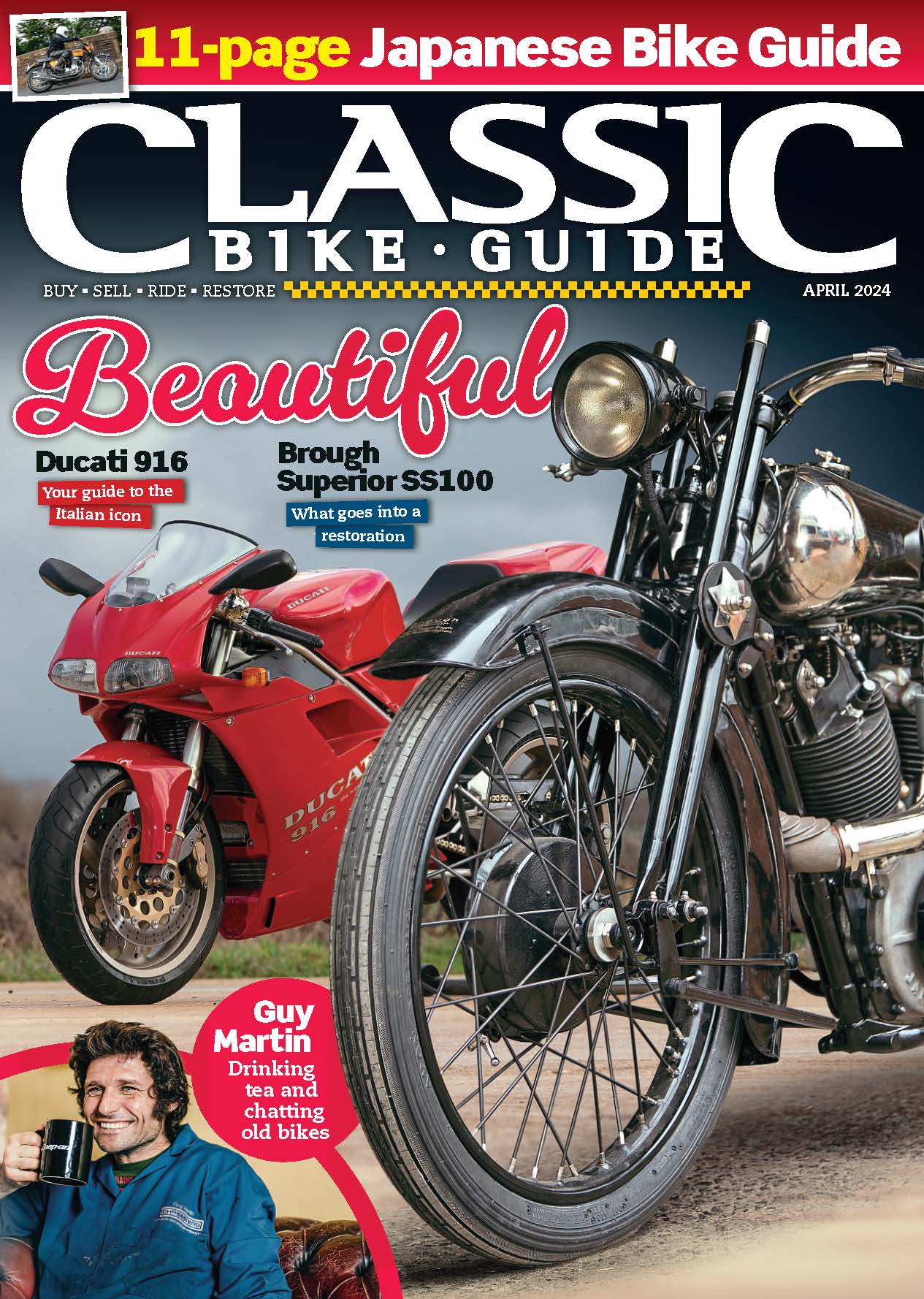It’s easy to find a bike with no paperwork, but exactly how do you jump through the rings of bureaucratic fire to get a registration? We walk you through it…
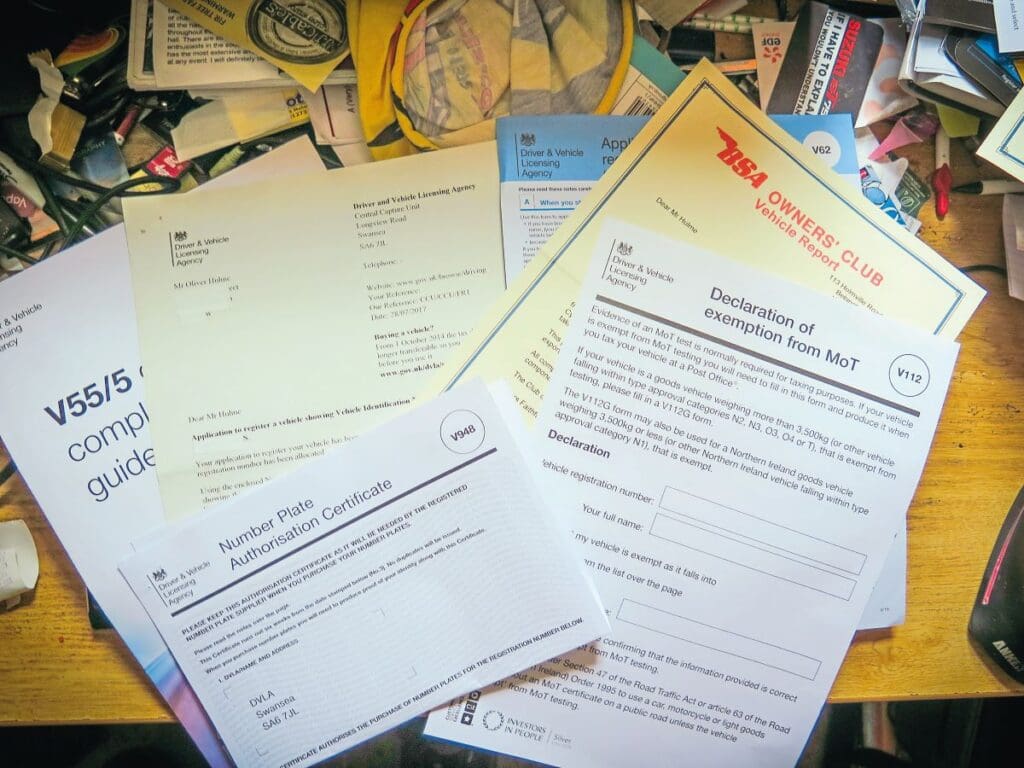
Words by Oli Hulme
You’ve bought a motorcycle. Or a pile of bits that purport to be a motorcycle. Or you’ve been given a Brough Superior by a long-lost great-aunt in her will, but it’s come with no paperwork. Now, the thing to do is make it official and register it in your name.
This is very important, and if you can do it before you start to get to serious work on it, this is a good idea. A recent news report revealed that someone who’s motorcycle was stolen 31 years ago had a vehicle returned to them because a new owner – who thought they’d legitimately bought an old bike with no registration document – expensively restored it and then attempted to register it, only to find it was stolen property, so it was returned to the original owner, who compensated the restorer for their work. But even so, that must have been a blow.
Warning – paperwork ahead
Before we start, yes, this can be complex, yes, there are a lot of forms to fill out and yes, some of it may seem more complicated than it could be. But the systems date back more than 100 years, some have never been on computer, and the basics are to make sure stolen or made-up bikes don’t get through, so we have less chance of having our pants pulled down and buying a B31 dressed up as a Gold Star or two Honda CB750s made into one. Not that anyone has ever done that. So, have patience – we will get you through it!


Checking the history
If it’s a bike that has been on the road relatively recently and you have a registration number, you could do an HPI check before you part with money. If you have access to the vehicle identification number, or VIN, otherwise known as the frame number, you could do this too. This can be done online but will often only work for modern machines with 16-digit VINs. Older numbers are much less likely to show up on the HPI system and checking with the VIN will not reveal the registration number.
Getting the paperwork
First, in the ‘teach you grandmother to suck eggs’ part of this guidance, if you have the New Keeper slip, to get a registration document, simply send this off to the DVLA for a replacement in your own name. If the previous owner hasn’t told the DVLA they’ve sold it, this can take several weeks, as they will need to be contacted to make sure you aren’t pulling a fast one.
You have the registration number but no logbook, hereinafter referred to as a V5(c)? First, check the bike is on the DVLA database. You can find this out by visiting www.gov.uk/get-vehicle-information-from-dvla and typing in the registration number.
If the registration number check shows the bike is on the system, you will need to fill out a V62 form. This is available from the .Gov website or your local Post Office. You will need the VIN for this too. It will cost £25 if successful, and you cannot do this online – you must pay by cheque or postal order and do it through the post.

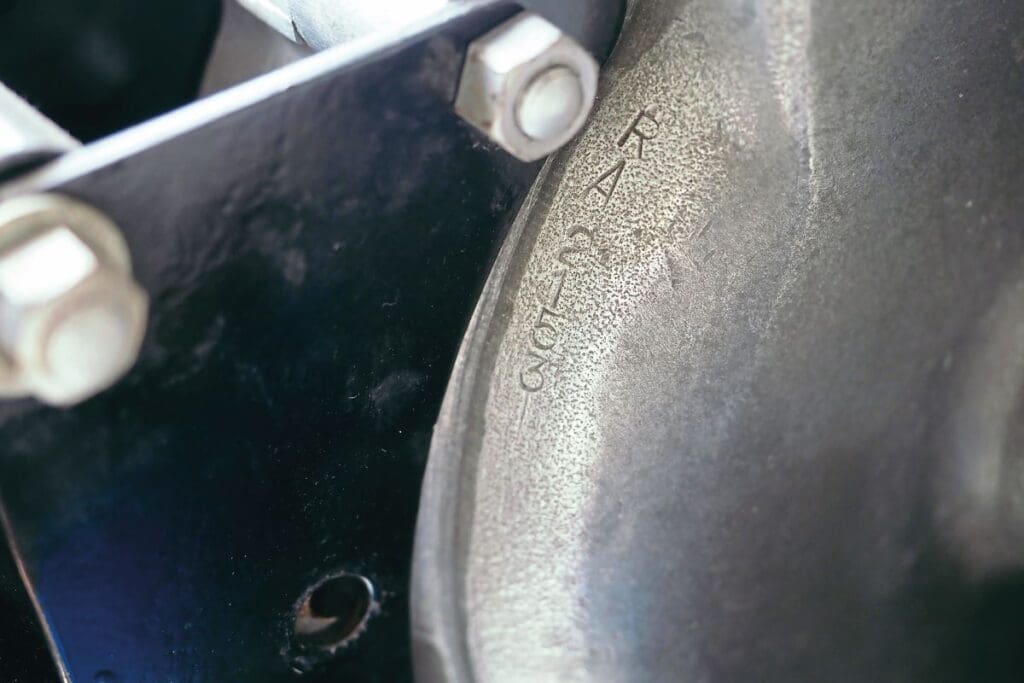
What if it’s not on the system?
The DVLA was established in 1965; until then, vehicles were recorded by local councils. If the bike was last recorded on the system prior to 1983 when the DVLA got a computer, it won’t be there. Then you will need a form called a ‘V765 – register a vehicle under its original registration number’. You can download this from the .Gov website.
You will also need a V55/5 form, also available from the .Gov website, a photo of the bike, and either an old V5, logbook or a dating certificate, or other evidence from an owners’ club, or any other evidence linking the registration number and the frame number to the bike.
Dating services
Different dating services have different requirements and charge fees from £5 upwards. The VMCC or BSA clubs, for example, will want a sheaf of photographs of the complete bike from all angles, shots of the frame and engine numbers, and ideally rubbings of the same as well as copies of any original documents. If they are happy with your documentation and/or pictures, they will send you a dating certificate.
Sometimes a club representative will want to visit to make sure you are a genuine applicant, so your bike will need to be in complete form, as it may need to be inspected – not necessarily running, but complete with wheels, engine and frame and so on.
Check that the numbers on the dating certificate when it arrives are the same as the ones on the VIN, and remember that clubs are staffed by volunteers, so patience may be required. A list of clubs offering dating services is available with the V765 form at www.gov.uk/government/publications/application-to-register-a-vehicle-under-its-original-registration-number.
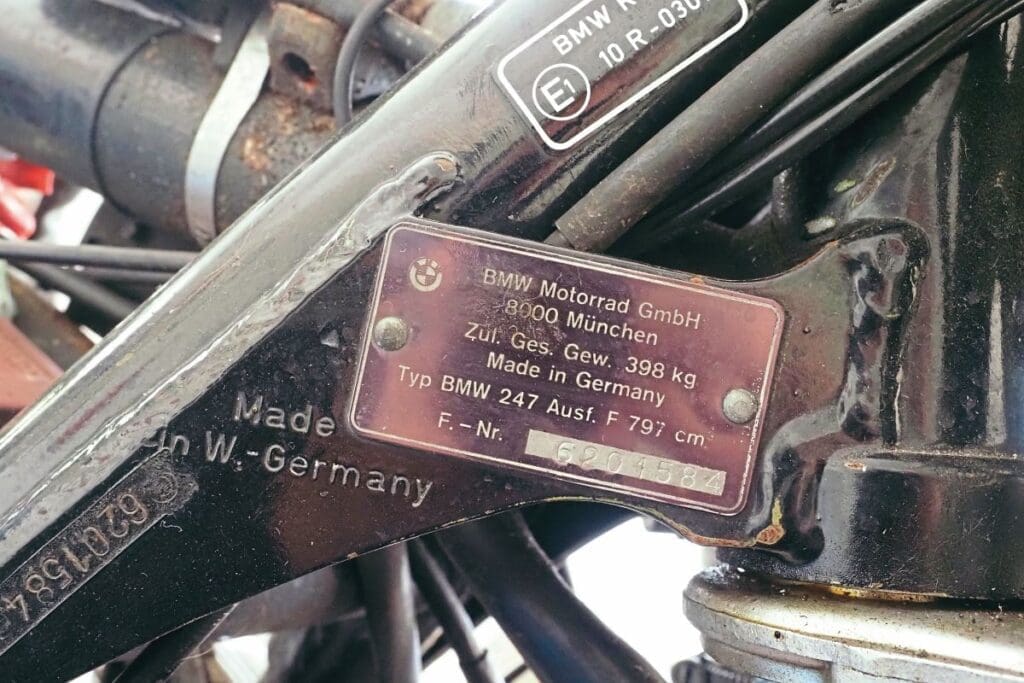

What if you don’t have the registration number?
Now things get complicated. There is no official way that an ordinary member of the public can get an old registration number from a frame number or VIN.
Things you can try
We do not endorse any of the following, but all the below have been tried with various levels of success.
The DVLA record system is based not on registration numbers, but on VIN records. There are apocryphal stories that might lead you to trying the following: First, do a free VIN HPI check to see if your machine is on the HPI system. This may only be worth trying with a 16-digit VIN: send the V62 without the registration number box completed but with the VIN included. Reading the V62 instructions it says that applications without the VIN will be rejected. However, it does not say you need the registration number. So, add your £25 cheque and send it off. If the staff at the DVLA are feeling generous when they open your envelope and your VIN shows up on the system, there is a small chance you will get a V5(c) back in your name.
While Joe Public cannot get registration numbers from a public HPI check, some motor traders can. You might find a friendly motor trader and ask them very nicely if they would do a check for the registration number in exchange for a few quid.
There are also individuals who offer this service online. Some of these are more trustworthy than others, and you pays your money and takes your chance. Buyer beware.
Getting an age-related number
If the above does not work, and your newly acquired BSA M21 has been in a coal shed for decades and has lost the number plate, the only way forward is to get a dating certificate and apply to the DVLA for an age-related number.
To get a new registration number, you need a V55/5. Download the V55/5 registration pack and instruction booklet from the .Gov website. The pack contains two sheets containing 68 questions to answer, but not all of these apply to classic motorcycles. A second pack also available on the website that explains how to fill the form out. You can also find guidance on the excellent BSA Owners’ Club website.
How to fill out a V55/5
Although there’s a note on the top of the V55/5 that reads ‘incomplete forms will be rejected’, not every single box is relevant to your bike. So, which boxes do you fill in? There are three pages of notes and 68 categories, but analysis suggests that only up to 20 need to be filled out for a classic motorcycle. You need to download a V355-5 from the .Gov site and visit the BSA club’s guide at www.bsaownersclub.co.uk/machine-v55, which will help enormously. Be very careful when filling out the form because you are dealing a with DVLA bureaucrats who won’t know a Scott from a Scammell.
The DVLA will want the V55/5 form, club dating letter and MoT certificate if it is less than 40 years old. You can get an MoT based on the frame number. You will need to send a copy of your passport or driving licence, two utility or council tax bills in your name, photos of each side of the bike, and hard-copy pictures of the frame and engine numbers (you can get digital pictures printed out at Boots and some supermarkets) and a fee, currently £55.
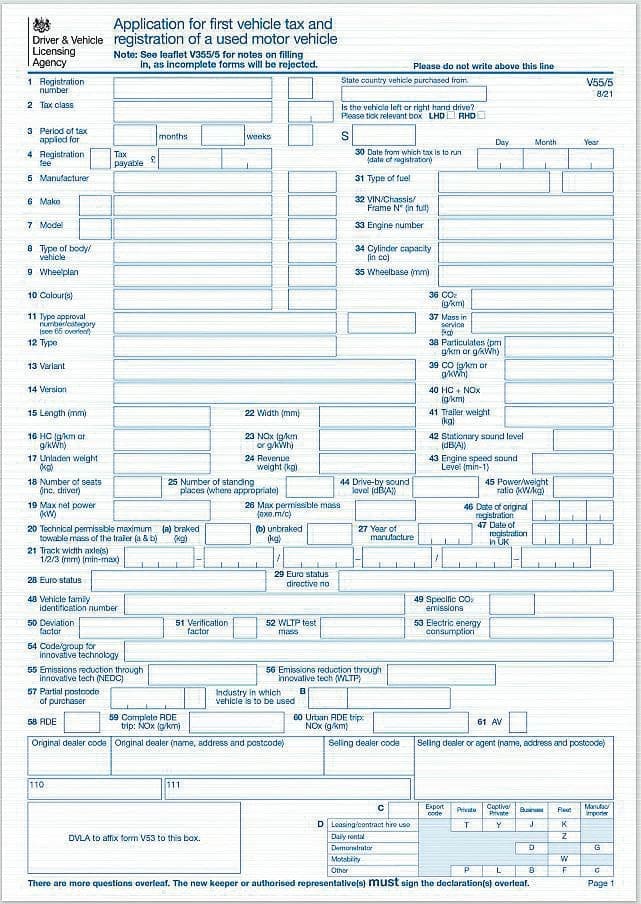
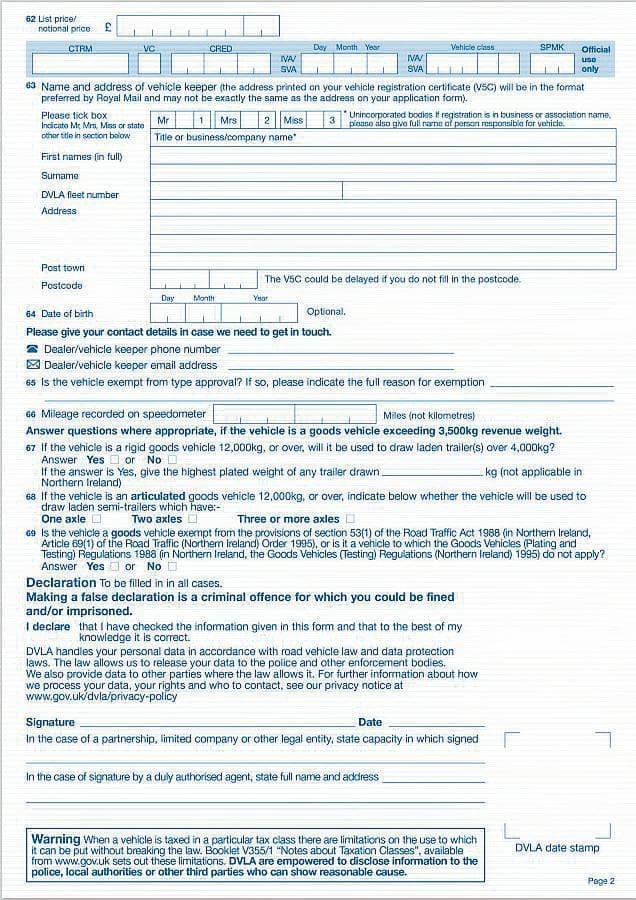
Do you need to tax it?
For a bike made more than 40 years ago (currently prior to January 1, 2023), you don’t have to pay to tax it. Instead, you’ll need to fill out a V112 form from the .Gov site or from your local Post Office, making it MoT and tax-exempt.
If it’s less than 40 years old, you’ll need to send a cheque to tax it for at least six months (12 months if it’s less than 150cc). But you can, of course, immediately SORN the bike once you get your documents and get a refund.
Insurance?
In the case of bikes to be registered in Northern Ireland, you need proof you have insurance. In the rest of the UK, you don’t.
It’s now an offence to keep a vehicle on the public road with tax but without insurance even if you don’t ride it. This is obviously of bigger importance for a car owner than a bike owner, as fitting an untaxed Opel Manta in your dining room is trickier than with a motorcycle. You can insure a classic bike based on its frame number and contact the insurance company when you have the official registration number, though some do place time limits on this service.
Nearly there!
The next step is to sign and date the declaration on the V55/5 and tick the boxes that apply to the documents you have included. Then, go back to the checklist and make sure you have all the documents and send the whole lot to the DVLA.
Sending by Royal Mail special delivery at the beginning of the week is a good idea. Sending documents to arrive on a Friday or Saturday may mean they won’t be signed for. The special delivery guaranteed option means you can claim the cost of postage back if the letter does not arrive the following morning. For those who really don’t trust Royal Mail, it also offers consequential loss insurance if you pay extra, which can return some of the cost of replacing documents if they lose them.
And finally…
If all is well, the DVLA should return the paperwork you sent with your documents within three weeks. We say ‘should’, but sometimes this can get lost in administrative hell, so do be patient.
You will also get a letter confirming your new registration number, so you can get a number plate and a V5c registration document, and then you are ready for the road.
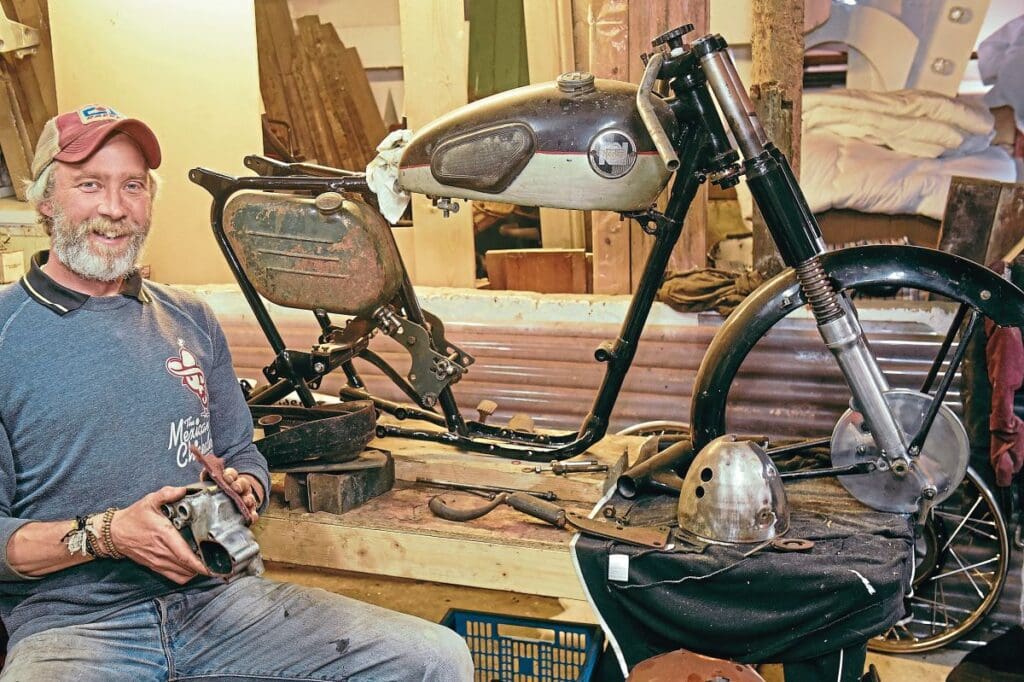
Piece of cake, right?
Great thanks goes to the BSA Owners’ Club, Andy at Somerset Classic Motorcycles, Mark at Green Eye Motorcycles and others who helped us put this guide together.


